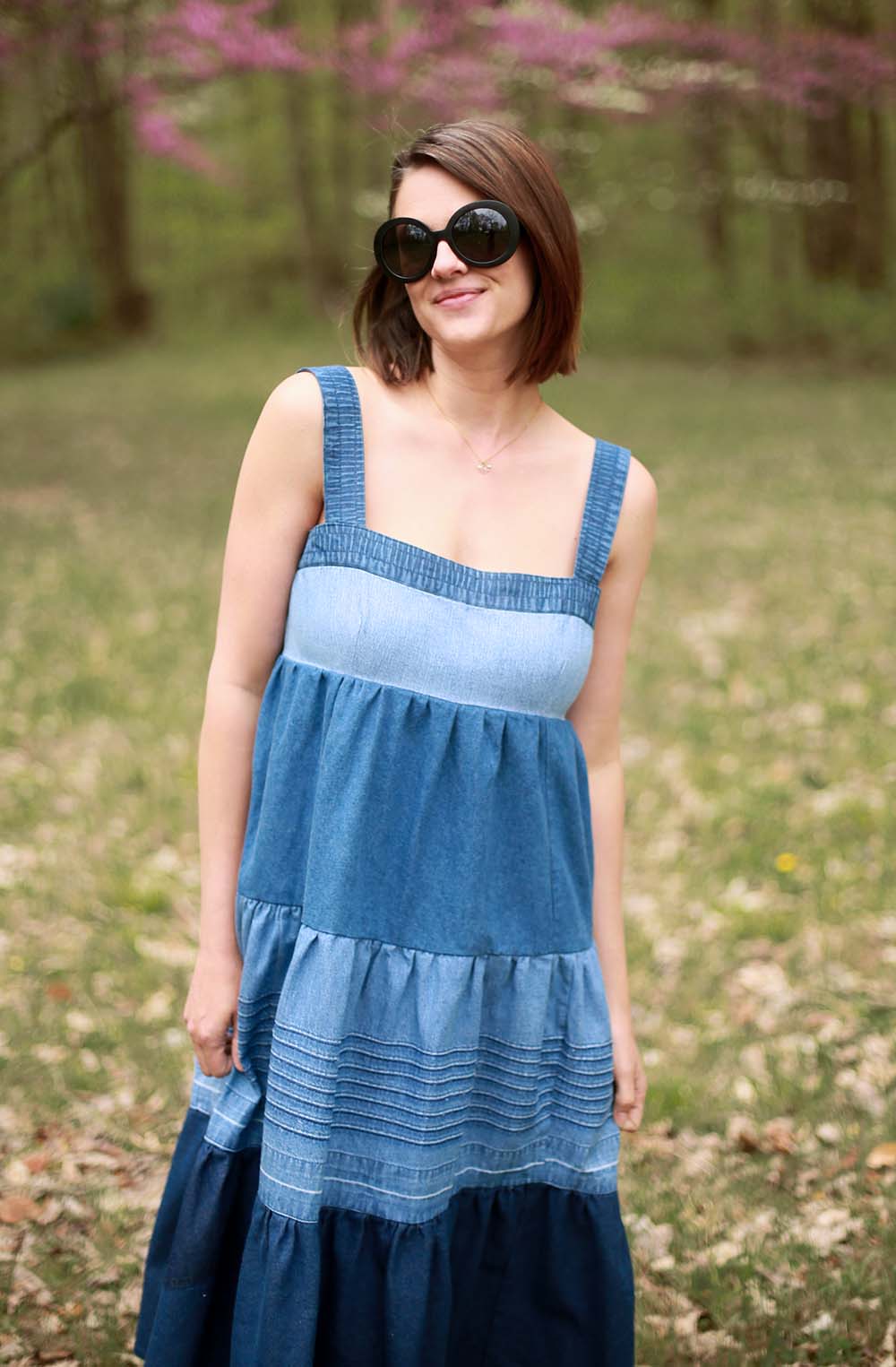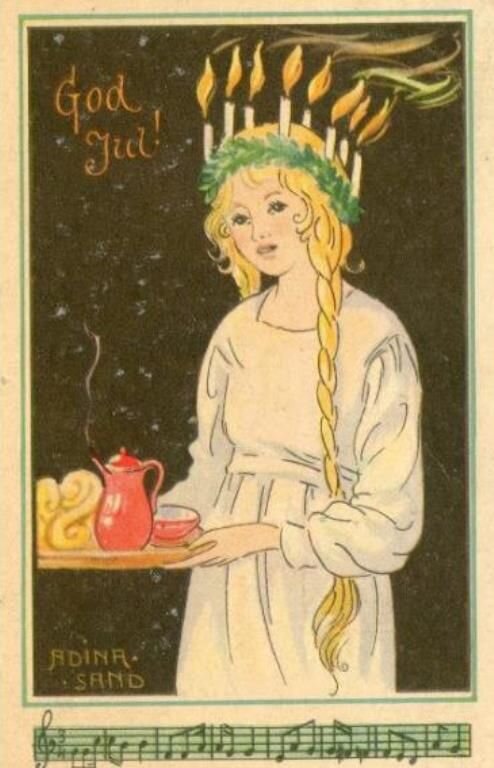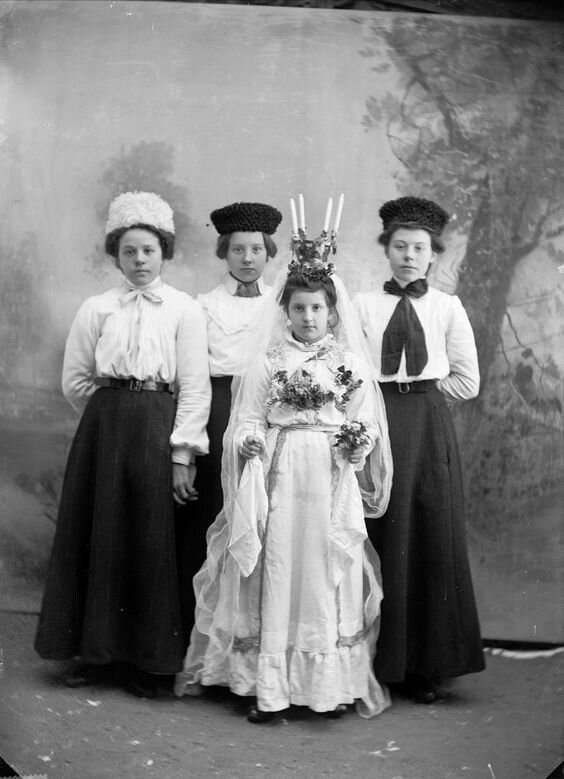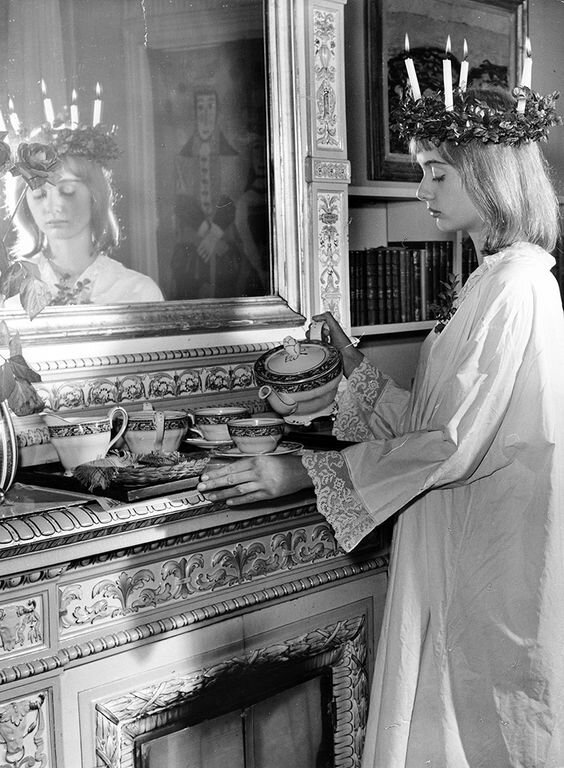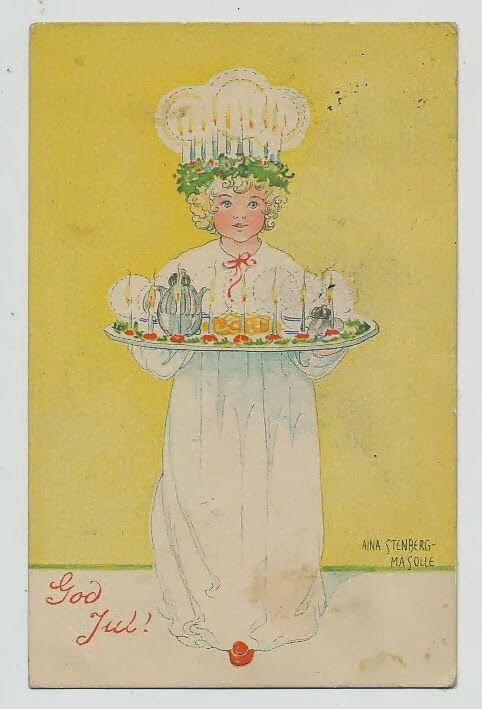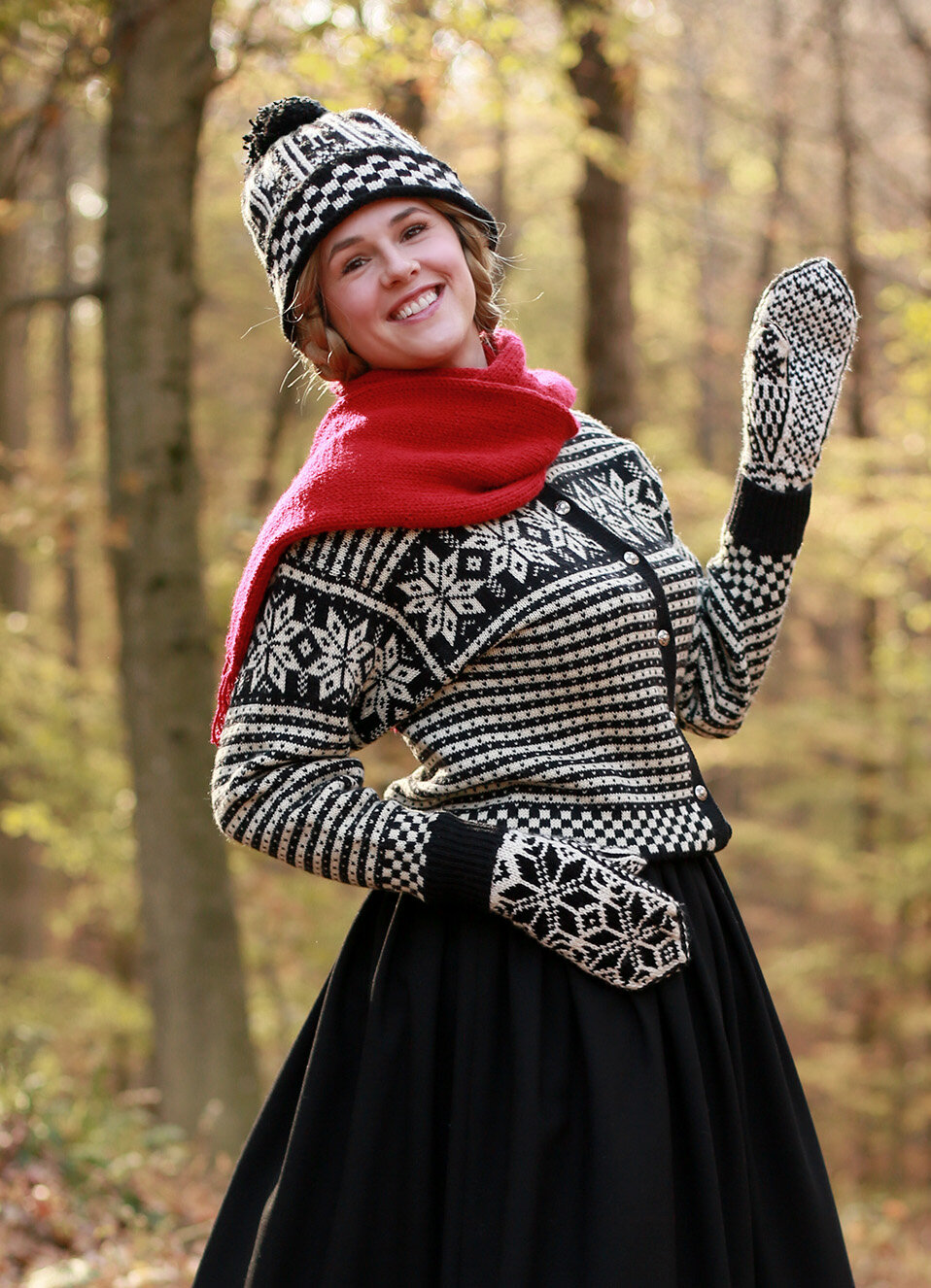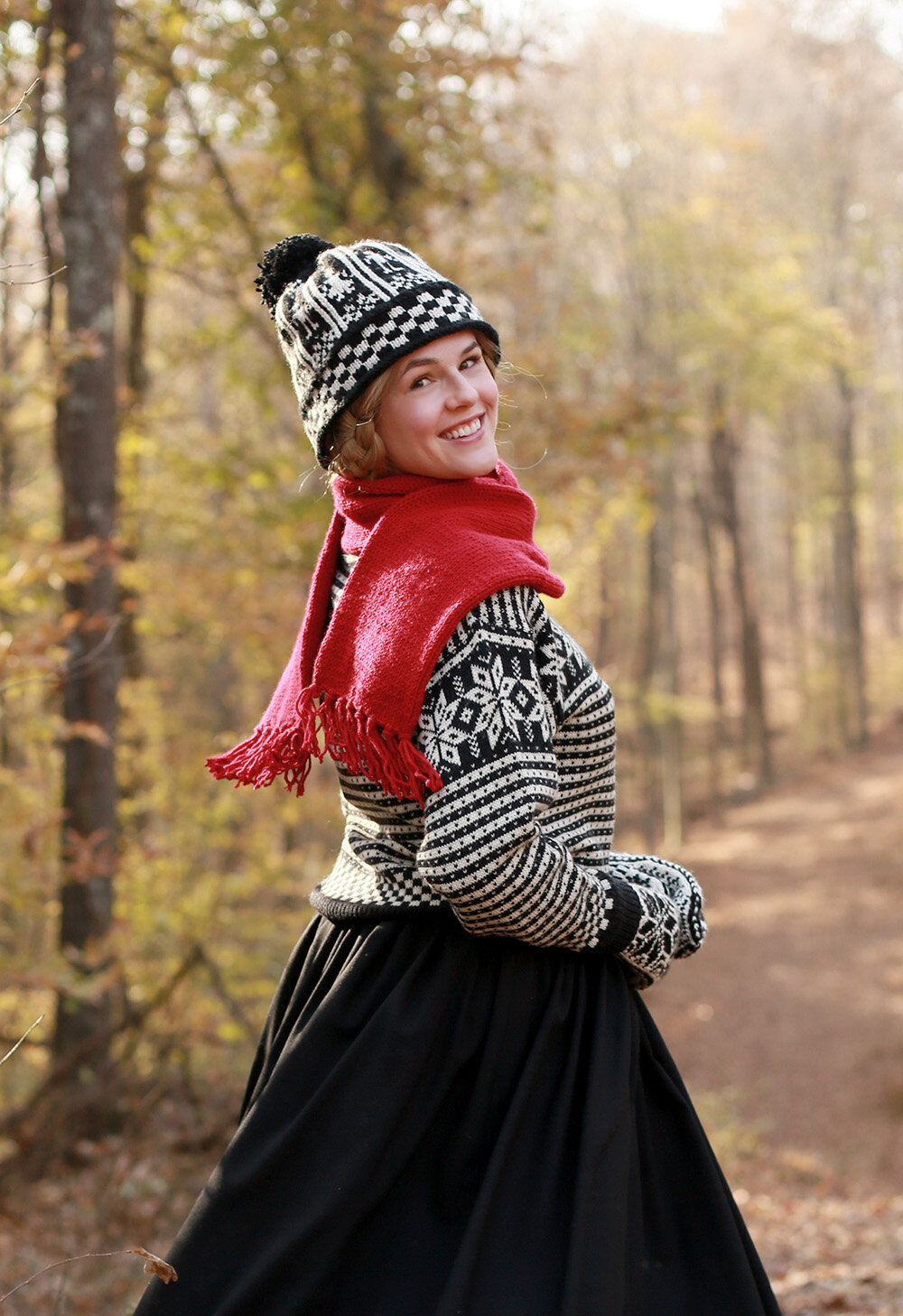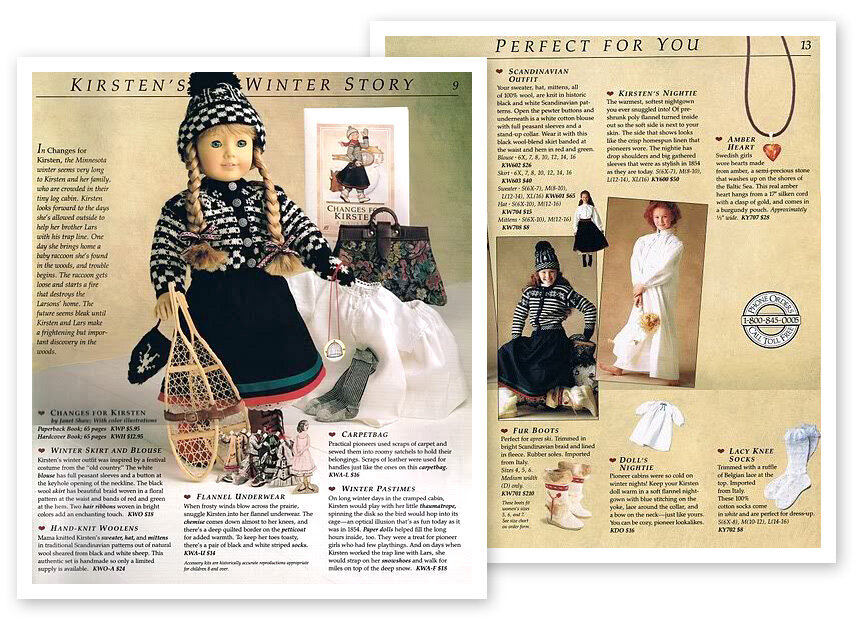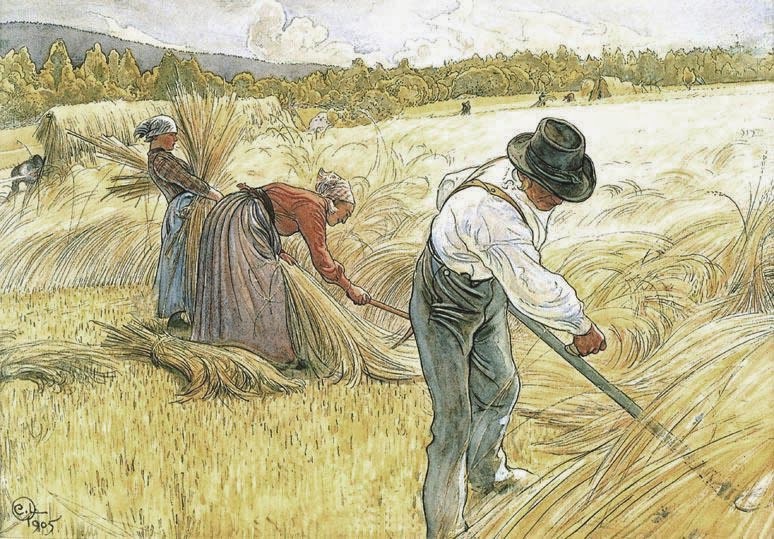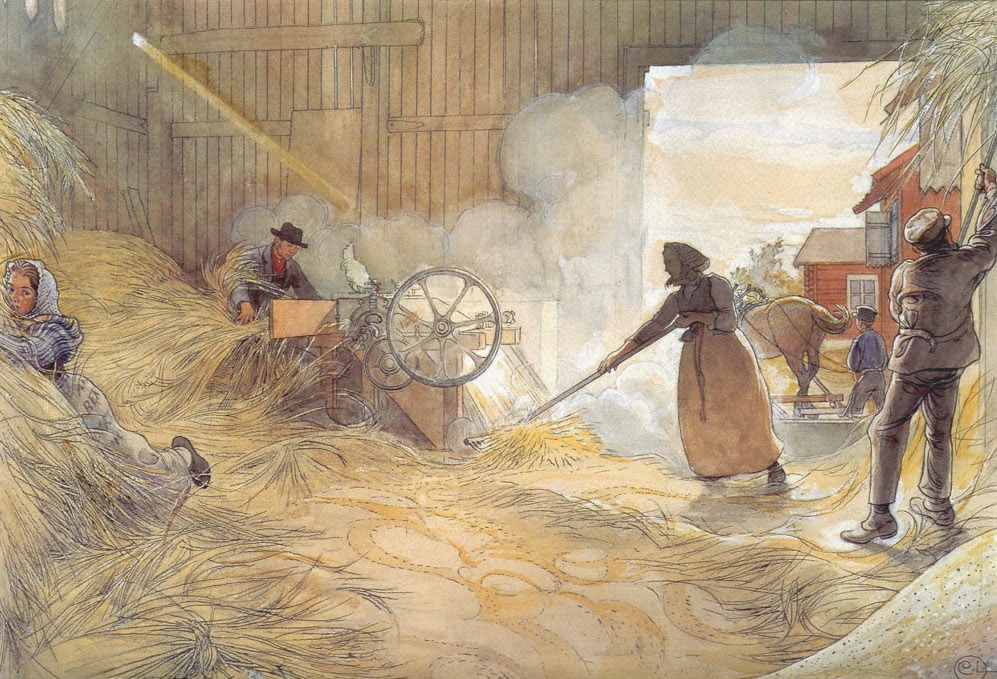The Kirsten Project | Saint Lucia through the Ages
/Kirsten’s holiday story Kirsten’s Surprise centers around her family’s tradition of celebrating Saint Lucia’s Day - a solstice celebration of light honoring Santka Lucia. The holiday took hold during Sweden’s Catholic period somewhere between 1000-1500 and is still honored today with parades and family celebrations on December 13th. If you’re thinking, wait! the winter solstice is on December 21st! (my birthday!), you’re right. There was a change from the Julian calendar to the Gregorian calendar for Sweden (and the US/UK) in the mid 18th century, which essentially pushed the calendar forward to account for leap days.
In Sweden, the eldest daughter in each family wakes before dawn and brings a breakfast tray to her family members in the dark, wearing a white (night) gown, red sash at the waist and a crown made of lingonberries and branches with candles glowing. Kirsten’s family celebrated St. Lucia’s day as the start of the Christmas season but her Swedish American cousins have since lost the custom. After a snowy all night adventure to town with her papa to retrieve the family’s trunks and Swedish heirlooms, Kirsten is able to play the part of St. Lucia on December 13th.
For my Saint Lucia costume I’m taking my cues from the artwork in Kirsten’s Surprise, illustrated by Renée Graef but looking through historical photos and illustrations made me so excited for my family’s own St. Lucia’s Day breakfast! Click on any image to view larger!

